
- Discovering the Sagrada Familia: A Historical Overview of Its Architecture
- The Location of Sagrada Familia: How to Get There in Barcelona
- Top Tips for Visiting Sagrada Familia: Best Times and Tickets
- Understanding the Significance of Sagrada Familia in Catalan Culture
- Exploring the Unique Features of Sagrada Familia: Gaudí’s Masterpiece
- A Guide to the Surrounding Area: Attractions Near Sagrada Familia
Barcelona is a city renowned for its rich architectural heritage, and among its many treasures stands the breathtaking Sagrada Familia. This iconic basilica, designed by the visionary architect Antoni Gaudí, has captivated millions with its intricate details and stunning facades.
As you embark on Discovering the Iconic Sagrada Familia: Where is it in Barcelona?, you'll find this masterpiece nestled in the Eixample district, easily accessible from various parts of the city. Its unique blend of Gothic and Art Nouveau styles makes it a must-visit attraction for anyone exploring the vibrant streets of Barcelona.
Discovering the Sagrada Familia: A Historical Overview of Its Architecture
The Sagrada Familia's architectural journey began in 1882, under the initial direction of Francisco de Paula del Villar, but it was Gaudí who transformed the vision into a monumental work of art. His unique approach combined natural forms and religious symbolism, resulting in a basilica that embodies both structural innovation and spiritual significance. The use of hyperboloid structures and the incorporation of light through stained glass are hallmarks of his style that redefine conventional ecclesiastical architecture.
Gaudí's design is characterized by three grand facades—the Nativity, Passion, and Glory. Each facade tells a distinct story, rich in biblical narratives and intricate sculptures that invite visitors to explore deeper meanings. The Nativity facade, for example, celebrates the birth of Christ with lively carvings, while the Passion facade presents a stark and somber reflection on the crucifixion.
In addition to its external grandeur, the interior of the Sagrada Familia is equally mesmerizing. Gaudí envisioned it as a forest, with towering columns resembling tree trunks that converge to form a canopy of stone. This innovative use of geometry and light creates an otherworldly atmosphere, enhancing the spiritual experience within the basilica. Visitors often remark on the interplay of light and space, which contributes to the sense of divine presence.
Currently, the Sagrada Familia is still under construction, with completion projected for 2026, marking the centenary of Gaudí's death. This ongoing evolution highlights the dedication to preserving Gaudí's original vision while integrating modern techniques. As such, it stands not just as a historical monument, but as a living testament to the continuity of artistic innovation in architecture.
The Location of Sagrada Familia: How to Get There in Barcelona
The Sagrada Familia is located in the heart of Barcelona, specifically in the Eixample district, which is known for its grid-like layout and modernist architecture. This central location makes it easily accessible, whether you are arriving by public transport or on foot. The closest metro station is Sagrada Familia on Line 2 (the purple line) and Line 5 (the blue line), allowing visitors to arrive conveniently from various parts of the city.
For those preferring to travel by bus, several lines serve the area, including the H10, 19, 33, and 34. Biking is also a popular option, as Barcelona boasts extensive cycle lanes. Additionally, many visitors enjoy walking to the basilica, providing an opportunity to explore the charming streets and nearby attractions such as the Hospital de Sant Pau.
Below is a table summarizing the various transportation options to reach the Sagrada Familia:
| Transportation Method | Details |
|---|---|
| Metro | Lines 2 and 5, get off at Sagrada Familia station |
| Bus | Lines H10, 19, 33, 34 |
| Bicycle | Accessible via bike lanes throughout the city |
| Walking | Enjoy nearby attractions and vibrant neighborhoods |
Whichever mode of transport you choose, the Sagrada Familia is sure to impress with its stunning architecture and rich history. Plan your visit accordingly to fully appreciate the beauty of this iconic landmark as you navigate through Barcelona's vibrant urban landscape.
Top Tips for Visiting Sagrada Familia: Best Times and Tickets
When planning your visit to the Sagrada Familia, timing is crucial to avoid large crowds. The best times to visit are early in the morning, right when it opens, or later in the afternoon close to closing time. This way, you can enjoy a more tranquil experience and capture stunning photographs with fewer people in the background.
Purchasing tickets in advance is highly recommended to skip the long queues. There are several options available:
- Basic Entry Ticket: Includes access to the basilica.
- Guided Tour Ticket: Offers insightful commentary from a knowledgeable guide.
- Audio Guide: Provides a self-guided experience with detailed information.
- Tower Access Ticket: Includes access to one of the towers, offering panoramic views of Barcelona.
In addition to the ticket options, consider visiting during weekdays rather than weekends or public holidays for a quieter experience. Additionally, keep in mind that the basilica is often more crowded during peak tourist seasons, so planning your visit in the shoulder seasons (spring and fall) can enhance your experience.
Here's a quick comparison of the best times and ticket options for visiting:
| Best Times to Visit | Ticket Options |
|---|---|
| Early Morning or Late Afternoon | Basic Entry, Guided Tour, Audio Guide, Tower Access |
| Weekdays Over Weekends | Book in Advance for Best Availability |
| Avoid Peak Tourist Seasons | Consider Special Discounts for Groups |
Understanding the Significance of Sagrada Familia in Catalan Culture
The Sagrada Familia is more than just an architectural marvel; it serves as a profound symbol of Catalan identity and pride. Its construction, which began in 1882, reflects the region's historical and cultural aspirations, with Gaudí's design embodying the spirit of Catalonia’s modernist movement. This basilica stands as a testament to the community's dedication to preserving and showcasing its unique heritage, making it a focal point of local culture.
In Catalonia, the Sagrada Familia is often seen as a manifestation of the region's resilience and creativity. The ongoing construction symbolizes the commitment to Gaudí's original vision, which resonates with the Catalan people. The basilica serves as a reminder of the importance of cultural continuity, underscoring how art and architecture can unite a community around shared values and aspirations.
Moreover, the Sagrada Familia integrates various elements of religious significance and natural beauty that are deeply rooted in Catalan culture. The intricate details in its facades narrate biblical stories while also reflecting local traditions. Visitors are often captivated by the stories depicted in the sculptures, which serve as a bridge between the past and the present, inviting exploration and reflection.
As a UNESCO World Heritage Site, the Sagrada Familia also plays a vital role in tourism, attracting millions of visitors annually. This influx helps to promote not only the basilica but also the broader cultural landscape of Catalonia. The architectural masterpiece has become a global icon, representing Barcelona’s artistic legacy and the enduring spirit of its people.
Exploring the Unique Features of Sagrada Familia: Gaudí’s Masterpiece
Exploring the unique features of the Sagrada Familia reveals a tapestry of architectural marvels that showcase Gaudí’s innovative genius. One of the most notable aspects is the basilica's use of light, which transforms the interior into a celestial experience. Gaudí carefully designed the stained glass windows to filter sunlight in varying colors, creating a dynamic play of light that changes throughout the day, enhancing the spiritual ambiance of the space.
Additionally, the Sagrada Familia is distinguished by its extravagant towers, which symbolize various biblical figures and narrate stories from the Gospel. Once completed, the basilica will have 18 towers, each representing a different aspect of Christianity, including the Virgin Mary, the Apostles, and the evangelists. The tallest tower, dedicated to Jesus Christ, will reach a majestic height of 172.5 meters, symbolizing His supremacy over the world.
Another unique feature is the organic design of the basilica, which draws inspiration from nature. Gaudí believed that architecture should reflect the natural world; thus, elements like spirals, curves, and forms that mimic trees and flowers are prevalent throughout the structure. This approach not only creates a visually stunning experience but also invites visitors to contemplate the connection between faith and the environment.
Lastly, the Sagrada Familia's sculptural detail is unparalleled, with each façade adorned with intricate carvings that convey profound religious narratives. The façade of the Nativity is a celebration of life and creation, while the Passion façade starkly contrasts with its portrayal of sacrifice and suffering. These elaborate sculptures serve not only as decorative elements but also as educational tools, inviting visitors to engage with the biblical stories that shaped the site’s purpose.
A Guide to the Surrounding Area: Attractions Near Sagrada Familia
When visiting the Sagrada Familia, it's essential to explore the vibrant area that surrounds this iconic basilica. Just a short walk away, you will find the enchanting Hospital de Sant Pau, a UNESCO World Heritage Site known for its stunning modernist architecture. Built between 1902 and 1930, it offers a unique glimpse into the architectural style of the early 20th century, making it a perfect complement to Gaudí's masterpiece.
Another nearby attraction is the beautiful Parc de la Ciutadella, a picturesque public park featuring a stunning fountain, a lake, and various sculptures. This green oasis provides a serene escape from the bustling city and is an excellent spot for a leisurely stroll or a picnic. Additionally, the park houses the Barcelona Zoo, making it a great destination for families visiting the area.
For those interested in shopping and dining, Avinguda Diagonal offers a plethora of options. This bustling avenue is lined with shops, cafes, and restaurants, allowing visitors to indulge in local cuisine or enjoy a refreshing drink while soaking in the vibrant atmosphere. Don't miss the chance to try some traditional Catalan tapas at one of the many nearby establishments.
Lastly, consider visiting the Casa Batlló and Casa Milà (La Pedrera), two more of Gaudí's remarkable creations located within walking distance from the Sagrada Familia. These architectural gems further illustrate Gaudí's innovative style and creativity, offering insight into the modernist movement that shaped Barcelona's artistic landscape. Exploring these attractions will enrich your experience and deepen your appreciation for the city's unique cultural heritage.
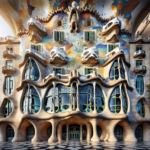 Casa Batlló: Which Ticket?
Casa Batlló: Which Ticket? Discover Fascinating Facts about Sagrada Familia in Barcelona, Spain!
Discover Fascinating Facts about Sagrada Familia in Barcelona, Spain!If you want to know other articles similar to Discovering the Iconic Sagrada Familia: Where is it in Barcelona? you can visit the category Sagrada Familia.
Deja una respuesta

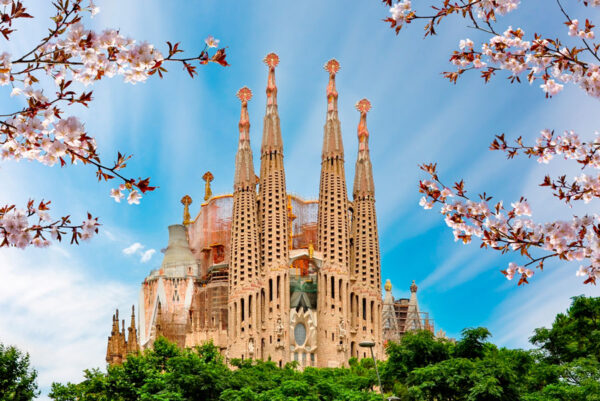
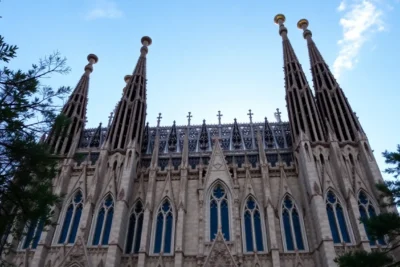
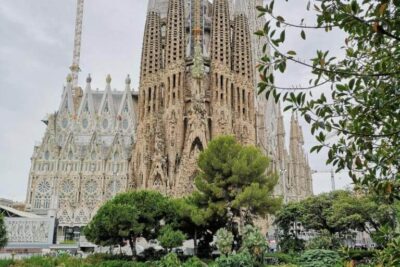
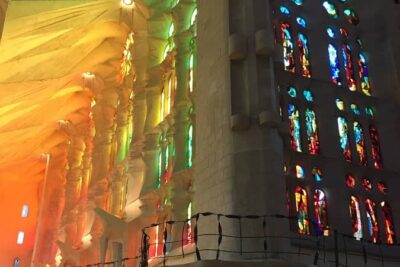
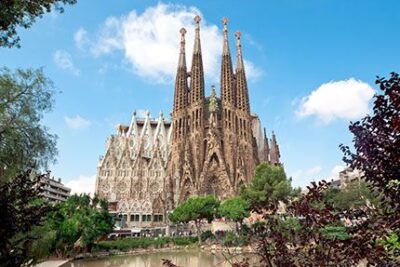
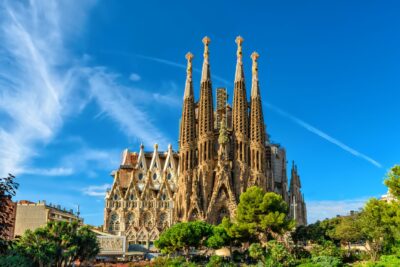
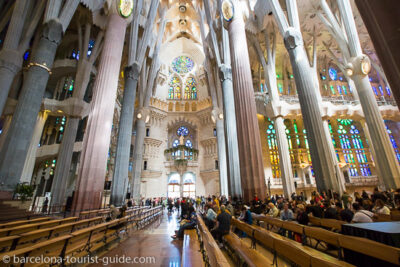
Read more!